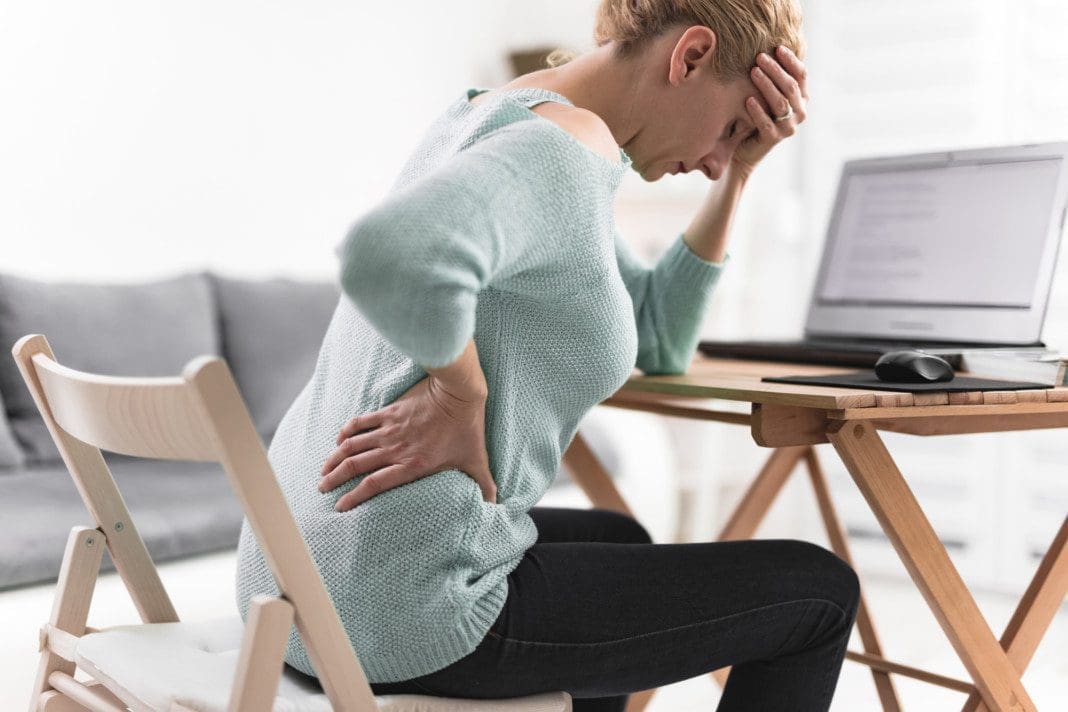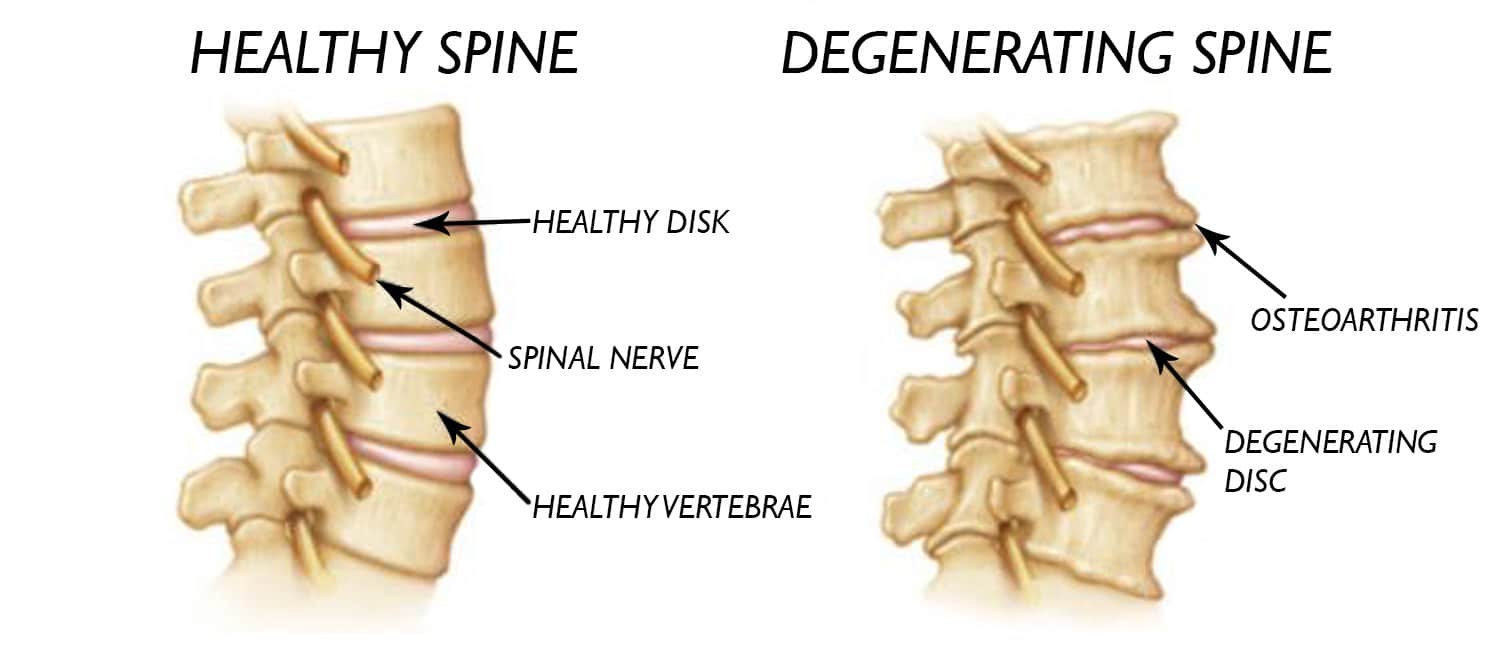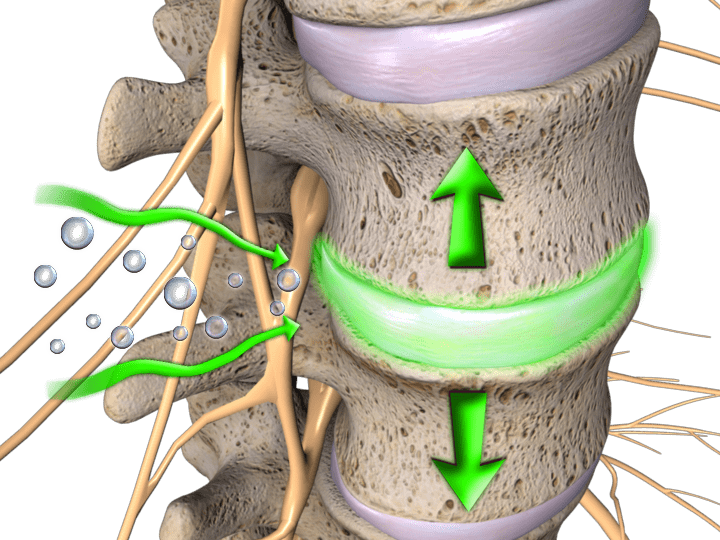Table of Contents
Introduction
As part of the musculoskeletal system located in the middle of the back, the spine helps the body stay up and provides everyday movements that a person goes from one place to another. Ligaments, soft tissue muscles, nerve roots, and other components help protect the spinal cord and spine from significant injuries like auto accidents, a slip, fall, work injuries, or acute injuries like a slipped disc or degeneration, herniation, pulled back muscles. These damages can affect the back in multiple ways and cause most people to suffer from pain. Thus many people start trying to find ways to relieve the pain in their spine or back. Today’s article immerses us in how degenerative disc starts to affect the spine and how treatments like decompression can help reduce the pain affecting the back and the spine. Referring patients to qualified and skilled providers who specialize in spinal decompression therapy. We guide our patients by referring to our associated medical providers based on their examination when it’s appropriate. We find that education is essential for asking insightful questions to our providers. Dr. Alex Jimenez DC provides this information as an educational service only. Disclaimer
Can my insurance cover it? Yes, it may. If you are uncertain, here is the link to all the insurance providers we cover. If you have any questions or concerns, please call Dr. Jimenez at 915-850-0900.
The Spine Can Degenerate Naturally
Feeling tired and aching after a long workday? Do you think a variety range of pain starting to affect either your neck or lower back? How about feeling the wear and tear on your back due to normal activities? It is expected that the body naturally ages over time, causing muscles, joints, and even ligaments not to work correctly. For the spine, though, the spinal discs, which are located in-between the spinal joints, can also age and cause pain to the body. Studies have mentioned that degenerative disc disrupts the structure of the disc itself. In a healthy, average, functioning body, the spine allows mobility and stability to the person doing any activities without feeling discomfort. When habits and lifestyle choices begin to affect the body, it can develop over time into degeneration in the spinal joints, causing the spine to be afflicted. Other research studies have provided that disc degeneration on the spine affects not only the lumbar area but also the cervical area as it causes three stages during the degenerative process:
- Dysfunction
- Instability
- Stabilization
These stages gradually affect the lumbar and cervical area over time; it causes spinal issues like osteoarthritis and spinal nerve root pressure in the back. When the spinal nerve roots become pressurized, it radiates pain that promotes muscle weakness in some back regions.
How Does It Affect The Back?
Since the spine does age naturally, causing disc degeneration, other symptoms in the lumbar regions of the back will begin to show up over time. Symptoms of low back pain seem to work hand-in-hand with disc degeneration as research studies have found that degenerative discs are irreversible in the spine. In contrast, low back pain can have adverse effects on many individuals. Low back pain exerts an enormous burden on the back’s lumbar region while promoting long-term disability. Anytime low back pain is associated with degenerative discs on the spine, the body loses the necessary sensory and motor functions such as movement limitations, balance issues, pain, muscle weakness, and reflex issues will hinder a person’s quality of life; studies have concluded.
An Overview On Degenerative Disc-Video

Feeling pain along your spine? How about aches and discomfort in the lower regions of your back? How about muscle stiffness and discomfort around the cervical and lumbar region of the spine? Experiencing disc degeneration is no laughing matter; why not try non-surgical decompression to alleviate the severe symptoms of disc degeneration. The video above provides an overview of disc degeneration and how non-surgical treatments like spinal decompression can help promote relief to the spine. Decompression promotes traction through gentle pulling to elongate spinal disc height while releasing the compressed discs off the aggravated nerve roots causing low back and neck pain. Suppose you want to learn more about decompression and how it can benefit you in providing relief from disc degeneration and other low back conditions? This link will explain what decompression offers optimal comfort for disc degeneration in the spine.
How Decompression Treats Degenerative Disc
Since both the spine and body can age, naturally, many unwanted symptoms can pop up over time in random locations in the back. With disc degeneration, the spinal discs help cushion the spine from any injuries that it succumbs to. Treatments like decompression can help with low back pain and disc degeneration. Research studies have proven that decompression treatments allow the space in-between the spinal joints to be vertically expanded while lessening the pressure and restoring disc height to the spine. Utilizing decompression enables the spine to restore the natural beneficial substances for the spinal discs while loosening the muscles connected to the spine.
Conclusion
Overall, the spine can age naturally, causing issues like disc degeneration to occur and causes unwanted symptoms like low back pain to cause long-term disability to many people. Disc degeneration is irreversible, causing sensory and motor dysfunction to the body, making it unstable, have muscle weakness in certain areas in the back, and affecting a person’s quality of life. Treatments like decompression therapy allow the spine to be decompressed while elongating disc height, causing relief to the individual while restoring spinal health. These types of treatments are perfect for many individuals that are looking to reclaim their health and wellness.
References
Apfel, Christian C, et al. “Restoration of Disk Height through Non-Surgical Spinal Decompression Is Associated with Decreased Discogenic Low Back Pain: A Retrospective Cohort Study.” BMC Musculoskeletal Disorders, BioMed Central, 8 July 2010, https://www.ncbi.nlm.nih.gov/pmc/articles/PMC2912793/.
Fakhoury, Jordan, and Thomas J Dowling. “Cervical Degenerative Disc Disease – Statpearls – NCBI Bookshelf.” In: StatPearls [Internet]. Treasure Island (FL), StatPearls Publishing, 25 Aug. 2021, https://www.ncbi.nlm.nih.gov/books/NBK560772/.
Jandrić, Slavica, and Branislav Antić. “[Low Back Pain and Degenerative Disc Disease].” Medicinski Pregled, U.S. National Library of Medicine, 2006, https://pubmed.ncbi.nlm.nih.gov/17345822/.
Kirnaz, Sertac, et al. “Pathomechanism and Biomechanics of Degenerative Disc Disease: Features of Healthy and Degenerated Discs.” International Journal of Spine Surgery, International Society for the Advancement of Spine Surgery, Apr. 2021, https://www.ncbi.nlm.nih.gov/pmc/articles/PMC8092938/.
Zheng, Chang-Jiang, and James Chen. “Disc Degeneration Implies Low Back Pain.” Theoretical Biology & Medical Modelling, BioMed Central, 9 Nov. 2015, https://www.ncbi.nlm.nih.gov/pmc/articles/PMC4640162/.
Disclaimer
Professional Scope of Practice *
The information herein on "How Degenerative Discs Can Affect Your Back" is not intended to replace a one-on-one relationship with a qualified health care professional or licensed physician and is not medical advice. We encourage you to make healthcare decisions based on your research and partnership with a qualified healthcare professional.
Blog Information & Scope Discussions
Welcome to El Paso's Premier Wellness and Injury Care Clinic & Wellness Blog, where Dr. Alex Jimenez, DC, FNP-C, a Multi-State board-certified Family Practice Nurse Practitioner (FNP-BC) and Chiropractor (DC), presents insights on how our multidisciplinary team is dedicated to holistic healing and personalized care. Our practice aligns with evidence-based treatment protocols inspired by integrative medicine principles, similar to those found on this site and our family practice-based chiromed.com site, focusing on restoring health naturally for patients of all ages.
Our areas of multidisciplinary practice include Wellness & Nutrition, Chronic Pain, Personal Injury, Auto Accident Care, Work Injuries, Back Injury, Low Back Pain, Neck Pain, Migraine Headaches, Sports Injuries, Severe Sciatica, Scoliosis, Complex Herniated Discs, Fibromyalgia, Chronic Pain, Complex Injuries, Stress Management, Functional Medicine Treatments, and in-scope care protocols.
Our information scope is multidisciplinary, focusing on musculoskeletal and physical medicine, wellness, contributing etiological viscerosomatic disturbances within clinical presentations, associated somato-visceral reflex clinical dynamics, subluxation complexes, sensitive health issues, and functional medicine articles, topics, and discussions.
We provide and present clinical collaboration with specialists from various disciplines. Each specialist is governed by their professional scope of practice and their jurisdiction of licensure. We use functional health & wellness protocols to treat and support care for musculoskeletal injuries or disorders.
Our videos, posts, topics, and insights address clinical matters and issues that are directly or indirectly related to our clinical scope of practice.
Our office has made a reasonable effort to provide supportive citations and has identified relevant research studies that support our posts. We provide copies of supporting research studies upon request to regulatory boards and the public.
We understand that we cover matters that require an additional explanation of how they may assist in a particular care plan or treatment protocol; therefore, to discuss the subject matter above further, please feel free to ask Dr. Alex Jimenez, DC, APRN, FNP-BC, or contact us at 915-850-0900.
We are here to help you and your family.
Blessings
Dr. Alex Jimenez DC, MSACP, APRN, FNP-BC*, CCST, IFMCP, CFMP, ATN
email: coach@elpasofunctionalmedicine.com
Multidisciplinary Licensing & Board Certifications:
Licensed as a Doctor of Chiropractic (DC) in Texas & New Mexico*
Texas DC License #: TX5807, Verified: TX5807
New Mexico DC License #: NM-DC2182, Verified: NM-DC2182
Licensed as a Multi-State Advanced Practice Registered Nurse (APRN*) in Texas & Multistate
Multistate Compact RN License by Endorsement (42 States)
Texas APRN License #: 1191402, Verified: 1191402 *
Florida APRN License #: 11043890, Verified: APRN11043890 *
* Prescriptive Authority Authorized
ANCC FNP-BC: Board Certified Nurse Practitioner*
Compact Status: Multi-State License: Authorized to Practice in 40 States*
Graduate with Honors: ICHS: MSN-FNP (Family Nurse Practitioner Program)
Degree Granted. Master's in Family Practice MSN Diploma (Cum Laude)
Dr. Alex Jimenez, DC, APRN, FNP-BC*, CFMP, IFMCP, ATN, CCST
My Digital Business Card
RN: Registered Nurse
APRNP: Advanced Practice Registered Nurse
FNP: Family Practice Specialization
DC: Doctor of Chiropractic
CFMP: Certified Functional Medicine Provider
IFMCP: Institute of Functional Medicine
CCST: Certified Chiropractic Spinal Trauma
ATN: Advanced Translational Neutrogenomics
















